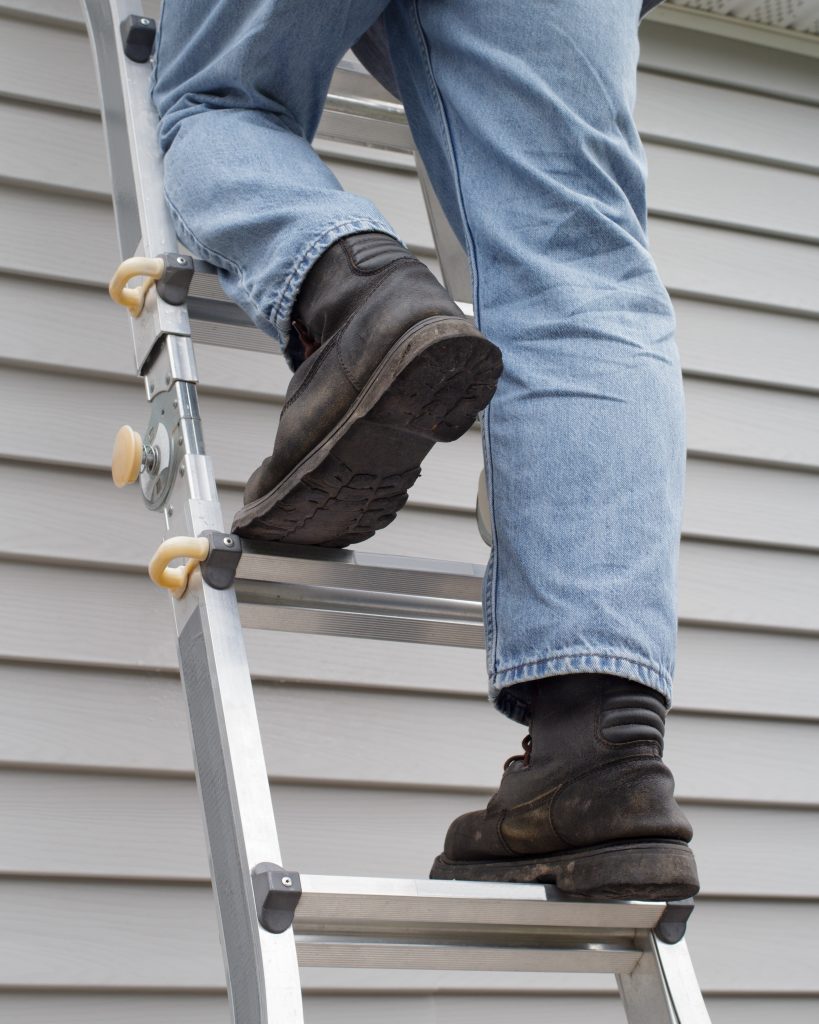Ladders are one of the most useful tools for home projects, whether you’re cleaning gutters, painting walls, or changing lightbulbs. However, improper use of ladders leads to thousands of injuries each year. By following a few simple guidelines, you can ensure that your ladder use is safe and efficient.
1. Choose the Right Ladder for the Job
Before climbing up, ensure you’re using the correct ladder for the task:
- Step ladders are ideal for indoor tasks like reaching cabinets or painting walls.
- Extension ladders are better for outdoor projects such as cleaning gutters or trimming trees.
- Platform ladders provide extra stability for prolonged tasks at one height.
Pay attention to the ladder’s height and weight rating. Never exceed the manufacturer’s maximum load capacity, which includes your body weight and any tools you’re carrying.
2. Inspect Your Ladder Before Each Use
Check the ladder for damage, such as cracks, bent rungs, or loose bolts. A damaged ladder can fail unexpectedly. If you notice any issues, replace or repair the ladder before using it.
3. Set Up on Stable Ground
A stable foundation is critical. Place the ladder on a flat, solid surface. If you’re working on uneven ground, use a ladder leveler or stabilizer to ensure balance. Avoid using a ladder on slippery surfaces, like wet grass or polished floors.
When using an extension ladder, follow the 4-to-1 rule: for every four feet of ladder height, position the base one foot away from the wall.
4. Climb with Caution
Face the ladder when climbing and maintain three points of contact at all times—two hands and one foot or two feet and one hand. Avoid carrying tools in your hands; use a tool belt or a pulley system to lift them.
Never lean to the side or overreach. If you can’t comfortably reach your target, climb down and reposition the ladder.
5. Avoid Dangerous Conditions
- Weather: Strong winds, rain, or ice can make ladder use hazardous. Wait for clear conditions.
- Electrical Hazards: When working near power lines, use a fiberglass or wooden ladder instead of an aluminum one, as metal conducts electricity.
6. Store Your Ladder Properly
When not in use, store your ladder in a safe, dry place. Ensure it’s secured to prevent it from falling or creating a tripping hazard.
7. Know When to Call a Professional
Some jobs, like working on a steep roof or trimming tall trees, are best left to professionals with the proper safety equipment and experience. There’s no shame in prioritizing your safety.
Conclusion
Using a ladder around the home doesn’t have to be risky. By choosing the right ladder, inspecting it before use, setting it up correctly, and practicing safe climbing habits, you can complete your projects without incident. Remember, your safety is always worth the extra effort!
If you found these tips helpful, share them with friends and family to promote safer home maintenance practices.
